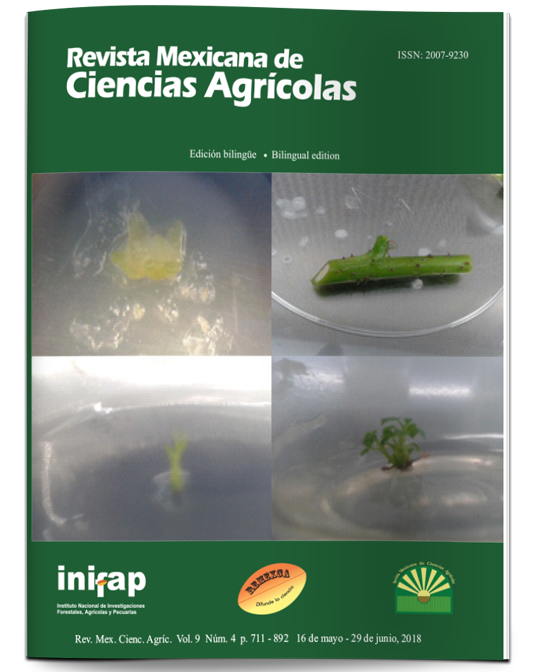Areas for wheat seed production in Central High Valleys of Mexico
DOI:
https://doi.org/10.29312/remexca.v9i4.1391Keywords:
Fusarium sp., Agrometeorology, deoxynivalenol, spike blight, zoning.Abstract
The agro-ecological zoning allowed to define localities with aptitude for the establishment of the wheat crop, as well as the areas that present conditions not favorable for the development of spike blight disease by Fusarium sp. (TEF) which causes weight reduction in grains and contamination by mycotoxins, among which is deoxynivalenol (DON). In general, agricultural production is determined by combinations of climate and soil characteristics. For wheat, it was considered as optimal temperature 15 to 23 °C, precipitation 750 to 900 mm, and altitude 4 500 meters above sea level, TEF depends mainly on the interaction of climatic factors and genotype. The climatic thresholds considered were those reported to intensify the Relative Disease Index: minimum temperature greater than 11 ºC, average temperature higher than 16.5 ºC, thermal oscillation lower than 13.4 ºC and rainfall greater than 30 mm. Potential areas were geographically and quantitatively delimited taking into account the criteria that define places and surfaces climatically suitable for the cultivation of rainfed wheat (may to October) and not suitable for TEF, making a discrimination of urban areas and other uses that do not be the agricultural, therefore the map generated can be used as a planning tool for the establishment of wheat cultivation, extension of areas and renewal of plantations for seed production in the Central High Valleys of Mexico.
Downloads
Downloads
Published
How to Cite
Issue
Section
License
The authors who publish in Revista Mexicana de Ciencias Agrícolas accept the following conditions:
In accordance with copyright laws, Revista Mexicana de Ciencias Agrícolas recognizes and respects the authors’ moral right and ownership of property rights which will be transferred to the journal for dissemination in open access. Invariably, all the authors have to sign a letter of transfer of property rights and of originality of the article to Instituto Nacional de Investigaciones Forestales, Agrícolas y Pecuarias (INIFAP) [National Institute of Forestry, Agricultural and Livestock Research]. The author(s) must pay a fee for the reception of articles before proceeding to editorial review.
All the texts published by Revista Mexicana de Ciencias Agrícolas —with no exception— are distributed under a Creative Commons License Attribution-NonCommercial 4.0 International (CC BY-NC 4.0), which allows third parties to use the publication as long as the work’s authorship and its first publication in this journal are mentioned.
The author(s) can enter into independent and additional contractual agreements for the nonexclusive distribution of the version of the article published in Revista Mexicana de Ciencias Agrícolas (for example include it into an institutional repository or publish it in a book) as long as it is clearly and explicitly indicated that the work was published for the first time in Revista Mexicana de Ciencias Agrícolas.
For all the above, the authors shall send the Letter-transfer of Property Rights for the first publication duly filled in and signed by the author(s). This form must be sent as a PDF file to: revista_atm@yahoo.com.mx; cienciasagricola@inifap.gob.mx; remexca2017@gmail.
This work is licensed under a Creative Commons Attribution-Noncommercial 4.0 International license.



